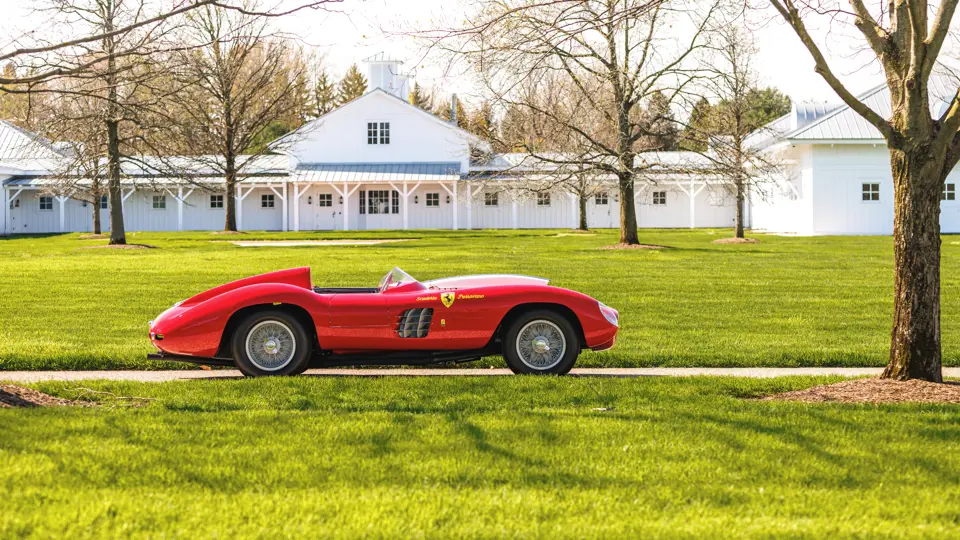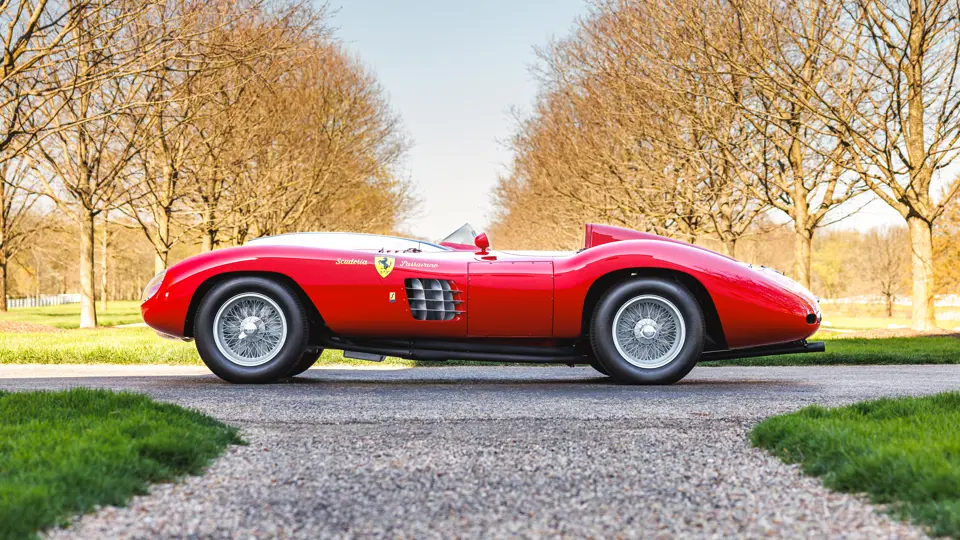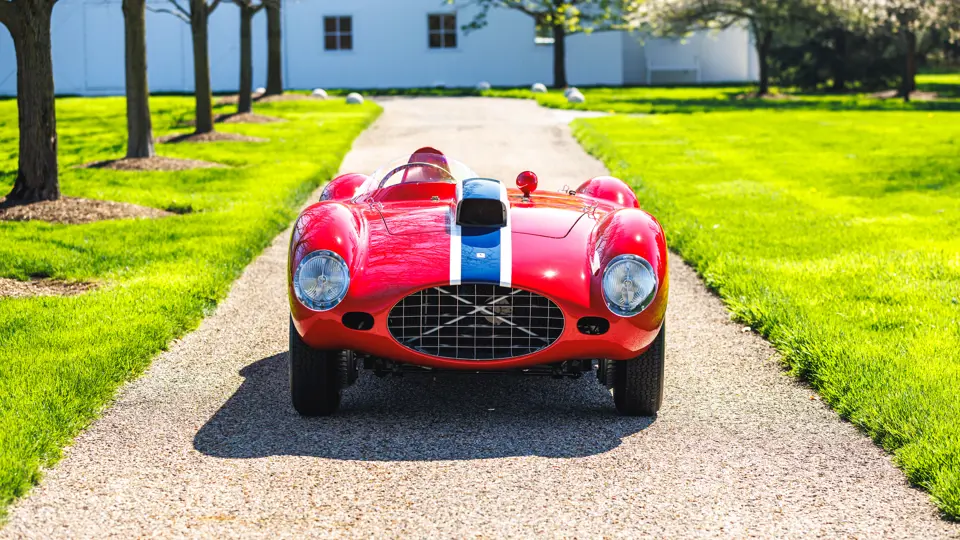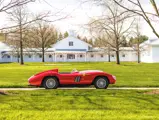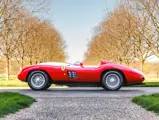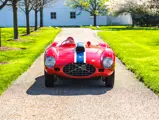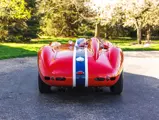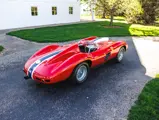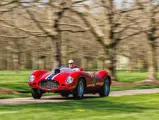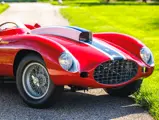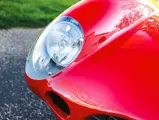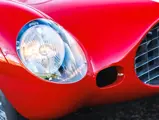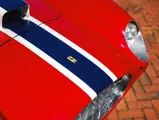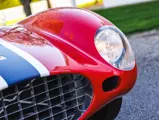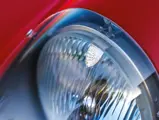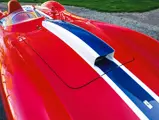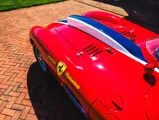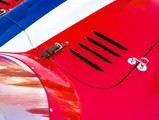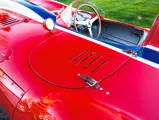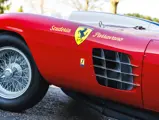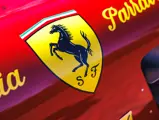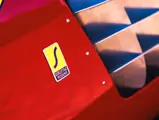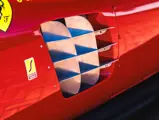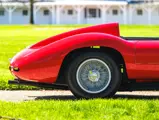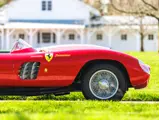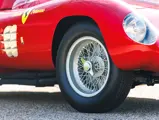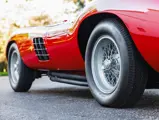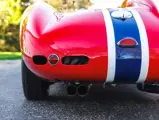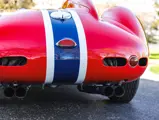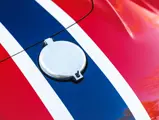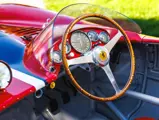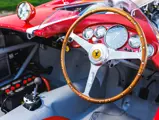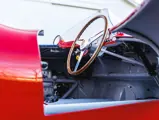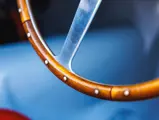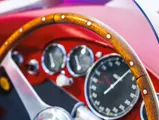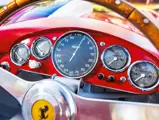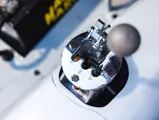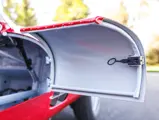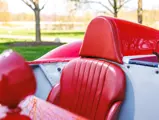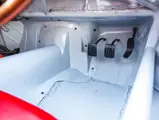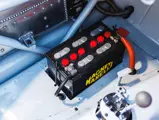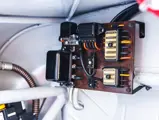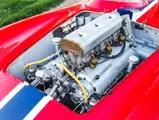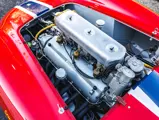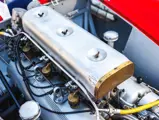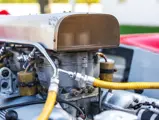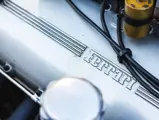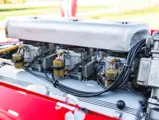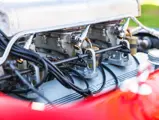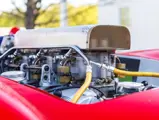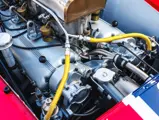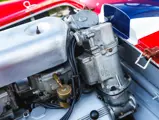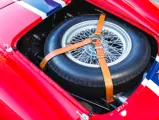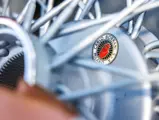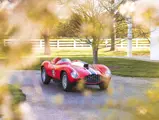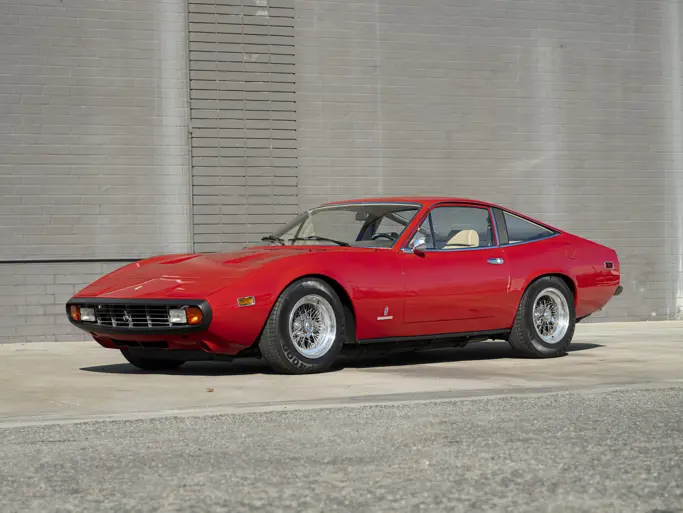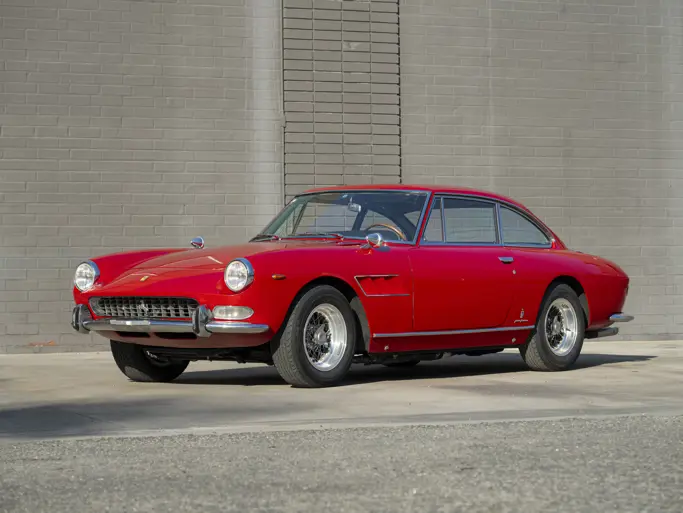
1955 Ferrari 410 Sport Spider by Scaglietti
{{lr.item.text}}
$12,985,000 USD | Sold
{{bidding.lot.reserveStatusFormatted}}
- Unique one-off sports racing Speciale; the prototype for the iconic 410 Sport Scuderia Ferrari Works cars
- Driven by the legendary Carroll Shelby to overall victory at the 1956 Palm Springs Road Races
- The last racing Ferrari acquired by the luminary Tony Parravano, the trailblazing 1950s Southern California sports car racing impresario
- A tailor-made example with exquisite one-off spider coachwork by the masterful Sergio Scaglietti
- Retains original matching-numbers engine
- Only four connoisseur owners in the last 53 years, including a prior 37-year period of single-owner care in one of the foremost Ferrari collections in America
- Comprehensively restored by marque specialists in 2017; exhibited at the 2018 Pebble Beach Concours d’Elegance
- A truly legendary example of Ferrari’s big-block V-12 open spider from the golden era of 1950s sportscar racing
PROMETHEUS BOUND
Despite Enzo Ferrari’s determination to win the 1955 World Sportscar Championship, very little went to plan that season. The new 118 and 121 LM six-cylinder models did not pan out as projected, forcing Ferrari to revert to his four-cylinder cars. And the disaster at Le Mans drew increasing scrutiny from critics of motor racing, which soon resulted in diminished engine-capacity regulations. At the very least, the Scuderia Ferrari looked forward to fielding a new V-12 model at the final championship contest of 1955, the Carrera Panamericana: the notoriously grueling five-day rally traversing the Mexican wilderness.
The engineering team specified a wide, low-riding tubular spaceframe with a shorter wheelbase, in the hopes of neutralizing the Panamericana’s bumpy roads. Development began on a new series of chassis that were designated with a CM suffix, representing “Carrera Messicana.” Instead of continuing with the V-12 racing engine he had designed for models like the 340 Mexico and 375 Plus, engineer Aurelio Lampredi chose the engine more recently built for the 410 Superamerica road car, a 4,961-cubic-centimeter V-12 that was Ferrari’s largest mill to date. But typical to the season, things did not go as planned; midway through the new car’s development process, the Carrera Panamericana was cancelled.
Ferrari built only four examples of the resulting 410 S, chassis numbers 0592 CM, 0594 CM, 0596 CM, and 0598 CM. As the build records of these cars reportedly featured no dates, we can only piece together the sequence of events circumstantially. It is clear that the final two cars received purpose-built type 519/C chassis and 24-plug competition engines, being completed as 410 Sport racing spiders. After the Carrera’s cancellation, these two cars were repurposed for the 1956 season, competing as factory entries in January 1956 at the 1000 KM of Buenos Aires.
Chassis number 0594 CM was completed as a grand touring coupe called the 410 Speciale and quickly sold into private ownership. The featured lot, chassis number 0592 CM, was neither a factory racer nor a sedate roadgoing car, but rather a 410 Sport Speciale prototype that was transitioned into a privateer racecar. Its unique history and extreme styling make a stunning testament to the 410 Sport’s brilliance.
CARRERA MESSICANA—THE FIRST OF FOUR
This 410 Sport is widely understood to be the initial development car, a claim that is supported by the car’s chassis number (being the earliest of the four), and many of its Superamerica-based specifications. This 410 rides a shortened version of the Superamerica’s type 514 chassis, featuring a 2,410-millimeter wheelbase, which distinguishes it from the final two cars. It is likewise powered by a 12-plug type 126 Superamerica engine, albeit with a more ferocious state of tune.
As concluded by historian Michael T. Lynch in an article for Cavallino magazine, the prioritization of the final two cars for factory competition purposes left the first two chassis earmarked for customer sales. This opened the door for one of the American West Coast racing scene’s most colorful team principals to add a true gem to his stable.
THAT’S AMORE!
In a field filled with a who’s-who of men’s men, Tony Parravano stood out from the rest. The Italian-born Parravano settled in Southern California by way of Chicago, eventually making a fortune in housing development. His deep pockets allowed him to indulge a newfound passion for racing Italian sports cars, and the Scuderia Parravano quickly made a name for itself in SCCA events, featuring top-grade drivers like Carroll Shelby, Ken Miles, and Phil Hill. Short of stature and wide of girth, Parravano would occasionally send his drivers to their wits’ end when he tinkered with the cars in the pits, only to endear himself to all with lavish dinners at top-tier restaurants during race weekends.
Parravano aspired to assemble the largest collection of Ferrari racing cars worldwide, and during 1955 alone he purchased a 750 Monza, a 375 Speciale, a 375 Plus engine, and a 121 LM. His native command of Italian, his ability to travel without respect to cost, and his irrepressible confidence carried him to an unusual degree of latitude within the Ferrari factory.
Upon the offering of 0592 CM for private sale, Parravano was able to have the car constructed in a true tailor-made status and reportedly consulted directly with Scaglietti about coachwork features. While 0592 CM’s styling is outwardly similar to the later cars at a glance, there are some notable differences. This spider has a more standard hood design, as opposed to the fender-enveloping hoods of the later cars. In addition to a longer tail, a mammoth ovoid grille, and a huge intake vent on the hood, the lowered coachwork is further distinguished by trademark Parravano cross-hatched fender-vent louvers, a feature that he ordered on many of his cars.
Officially sold to Parravano in the summer of 1955, the 410 Sport was entered in the Palm Springs Road Races in February 1956, where it was piloted to overall victory by none other than Carroll Shelby himself. Shelby, who had driven a number of events for Scuderia Parravano, was at the end of his rope with Tony’s idiosyncrasies by this time, and this race proved to be his final outing under the Italian’s banner. Switching to John Edgar’s team, Shelby would go on to have massive racing success in a sister 410 Sport, chassis 0598 CM, which together with his Palm Springs victory in 0592 CM, helped put him on the racing map, paving his way to his Aston Martin Works team drive at the 24 Hours of Le Mans in 1959 where he famously achieved overall victory.
In February 1957 the 410 Sport continued racing for Scuderia Parravano at New Smyrna Beach, Florida, where Eric Hauser finished 4th in the preliminary race. The little-known Bart Spiegelman then drove in the main event but retired early, and this marked the end of the car’s SCCA racing career.
Parravano’s exit from the scene is certainly better known if not better understood than his entrance. A federal tax lien compelled Tony to flee for Mexico in mid 1957, and although he was successful in this evasion, only some of his cars escaped south of the border without being impounded. Chassis number 0592 CM was one, and it remained stored in an Ensenada warehouse for some time.
In April 1960 Parravano was scheduled to return to the US for a court date but he never arrived, and no one ever saw him again. His disappearance remains one of racing’s most fascinating mysteries, evoking shades of Amelia Earhart or Jimmy Hoffa.
FROM COAST TO COAST, AND BEYOND
Parravano’s estate eventually sold the cars in Mexico to local enthusiasts, and in the early 1960s the 410 Sport was acquired by Javier Velasquez of Mexico City, one of the organizers of the Mexican Grand Prix. The Ferrari was then raced in 1964 in the Carrera de Costa a Costa Mexico (from Veracruz to Acapulco) by Juan Buchanon, as pictured in the February 1965 issue of Road & Track. By this time the alloy coachwork had been decorated with numerous names and sponsors, in the busy style of the Carrera Panamericana racecars.
The 410’s photo in R&T caught the attention of an architect residing in Solebury, Pennsylvania named Robert Dusek. A few years later Dusek explored acquiring sports cars in Mexico, and in 1970 he was approached by Velasquez about the availability of the 410, which the American instantly recognized from the magazine article. After arranging its purchase in June 1971, the 410 Sport joined one of the most significant early American Ferrari collections of the 1960s and 1970s. Stablemates included many of Ferrari’s greatest sports racing and GT models including a 250 Testa Rossa, 335 Sport, 290 MM, 250 LM, 250 GT Tour de France, 330 P, 365 P2/3, 612 Can Am, and 857 Sport, among several others.
In June 2008, after 37 years of passionate custody, Mr. Dusek sold the Ferrari and it joined one of Germany’s foremost Ferrari collections, where it remained for approximately six years. Acquired by the consignor in September 2014, the 410 was treated to a comprehensive restoration by two of the Ferrari niche’s most respected craftsmen. Engine guru Patrick Ottis was retained to rebuild the massive V-12, while Brian Hoyt was entrusted to refurbish the chassis systems and coachwork in its current stunning livery. In this beautifully restored state, the spider majestically returned to the concours center stage with an appearance at the 2018 Pebble Beach Concours d’Elegance.
It is important to note that 0592 CM is arguably the most original of the four 410 S examples, retaining its original matching-numbers engine, and having never been damaged during its short racing career. A true one-off Speciale big-block V-12 driven to victory by the legendary Carroll Shelby with Scuderia Parravano at one of America’s most iconic circuits of the 1950s, this prototype 410 Sport is undoubtedly one of Ferrari’s most impressively specified and designed racing spiders of the golden age of American sportscar racing. Ferrari collectors seeking an historically important and breathtaking thoroughbred Prancing Horse, eligible for many of the world’s most important events, need look no further.




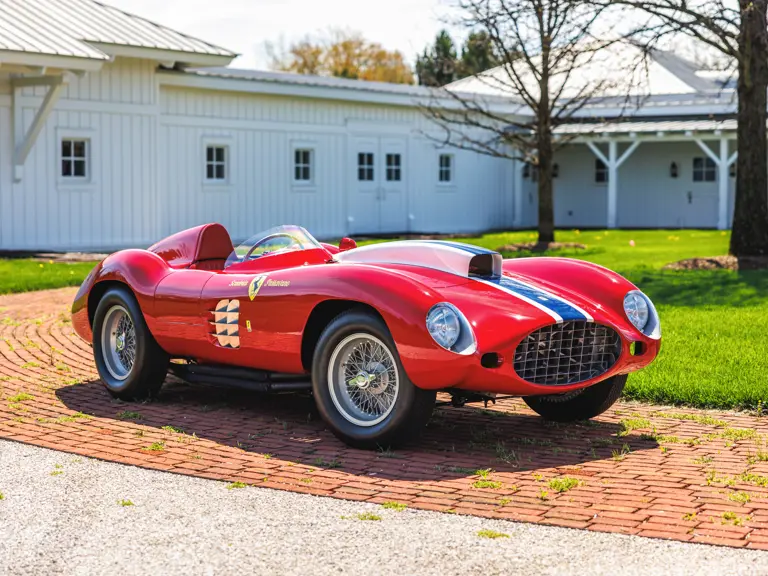

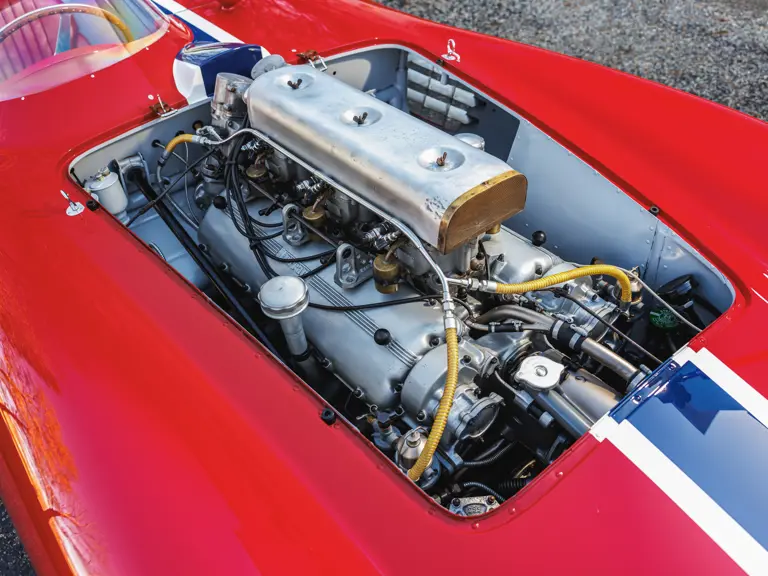


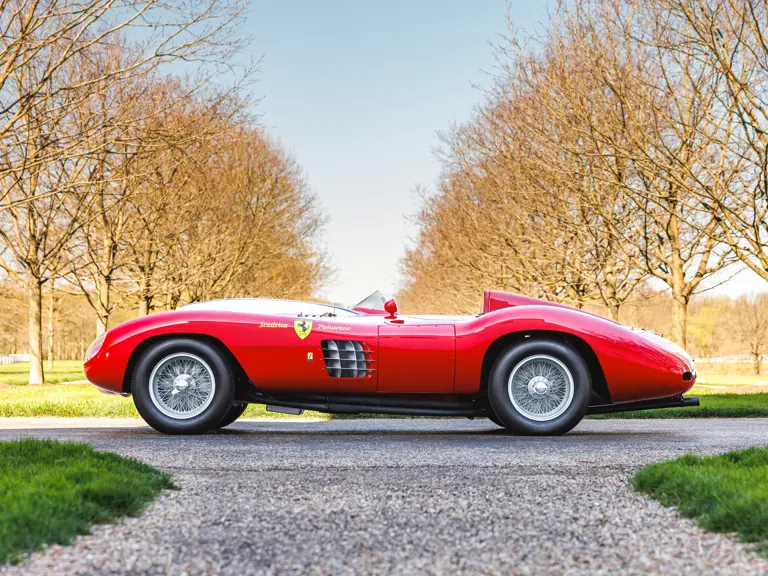
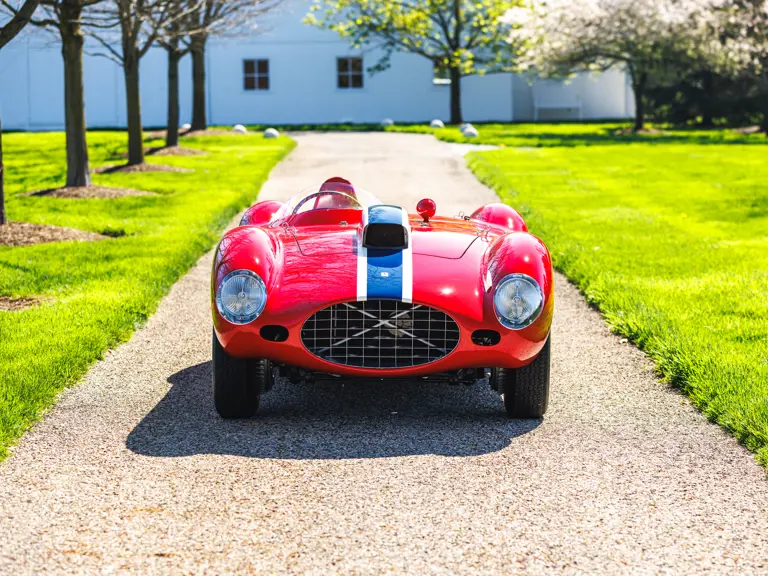
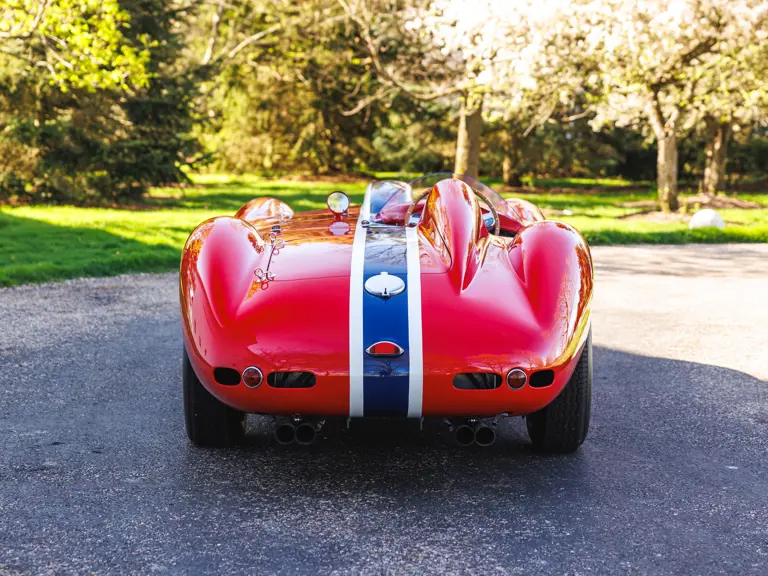

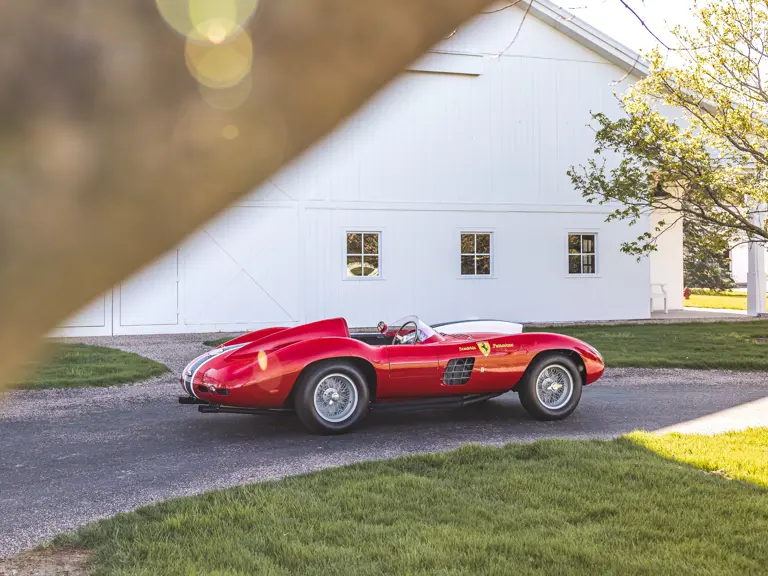

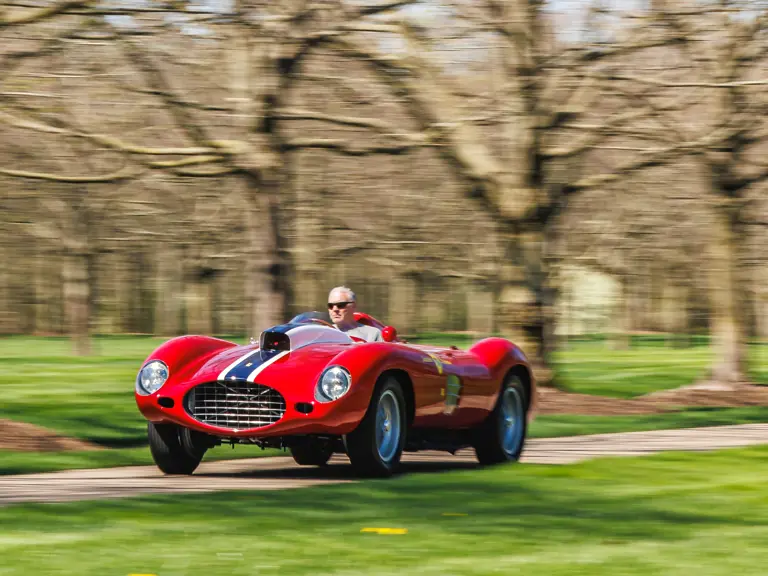

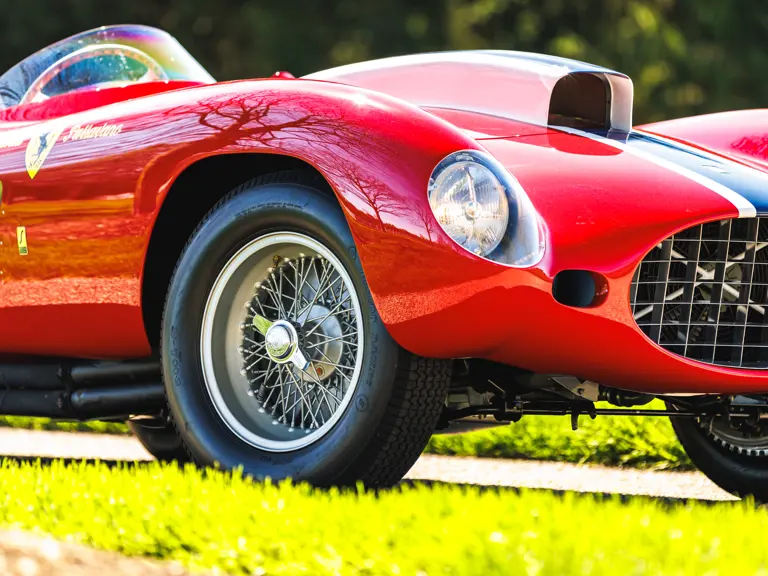




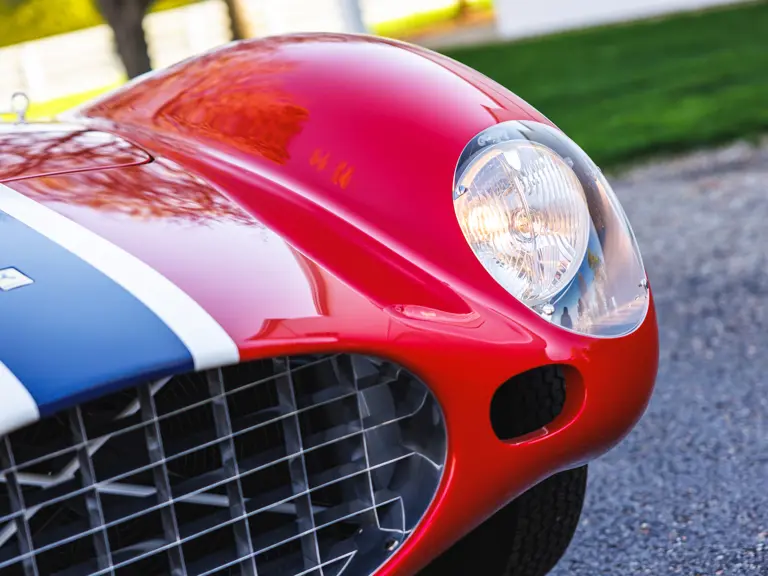
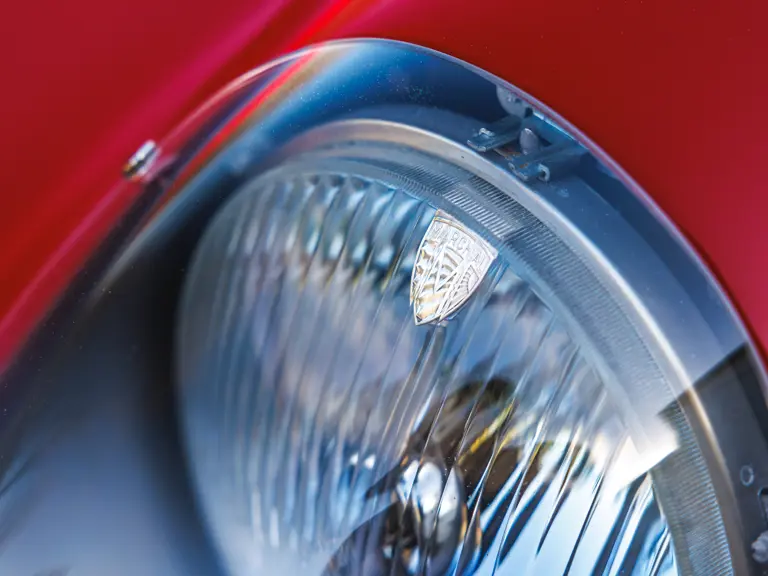
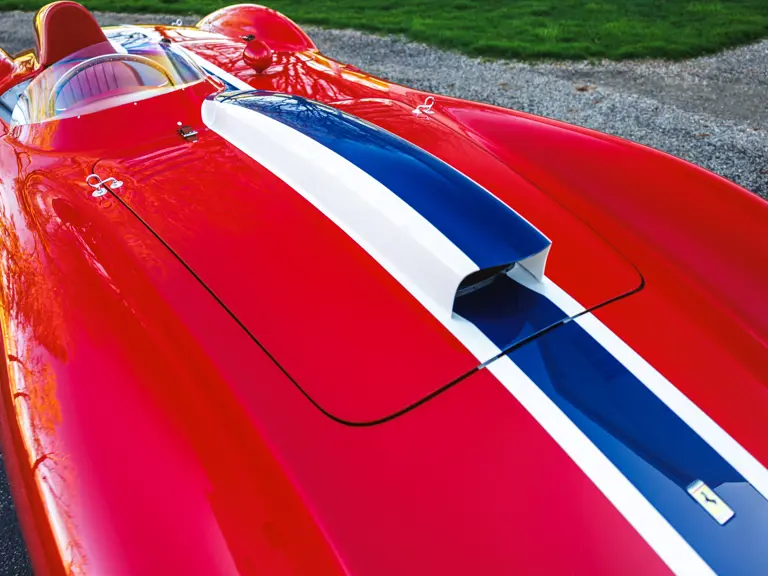

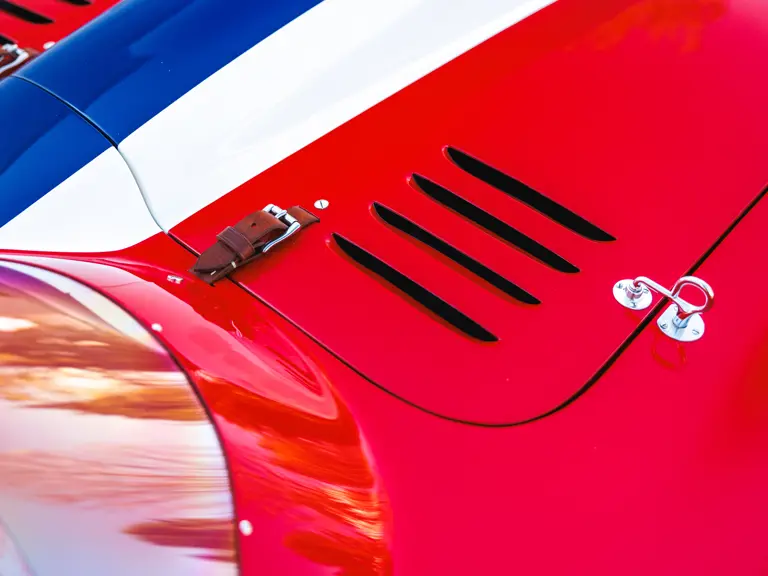
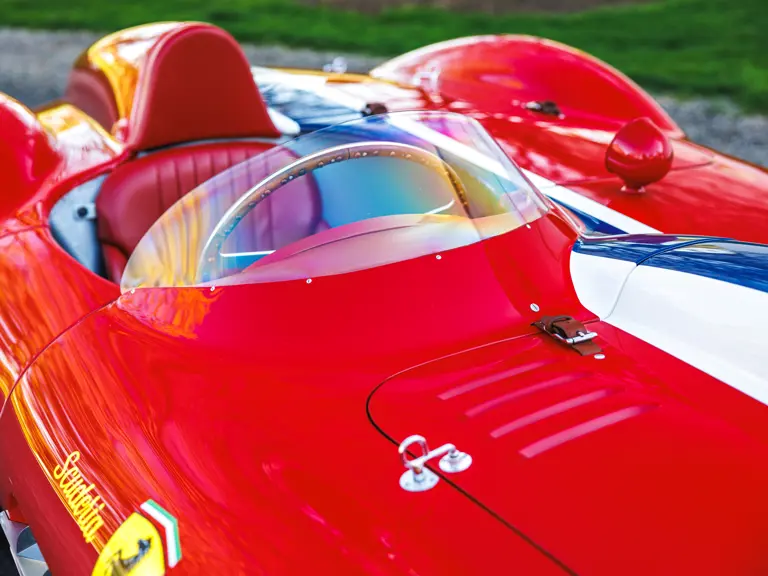
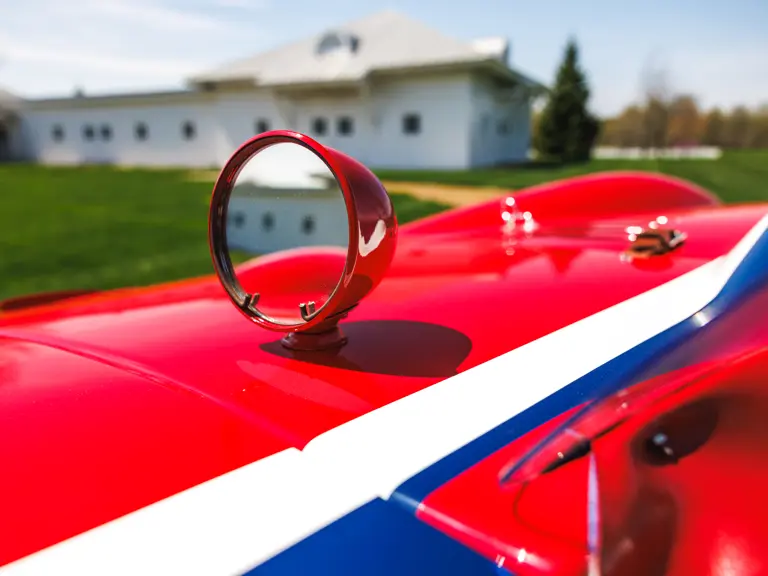
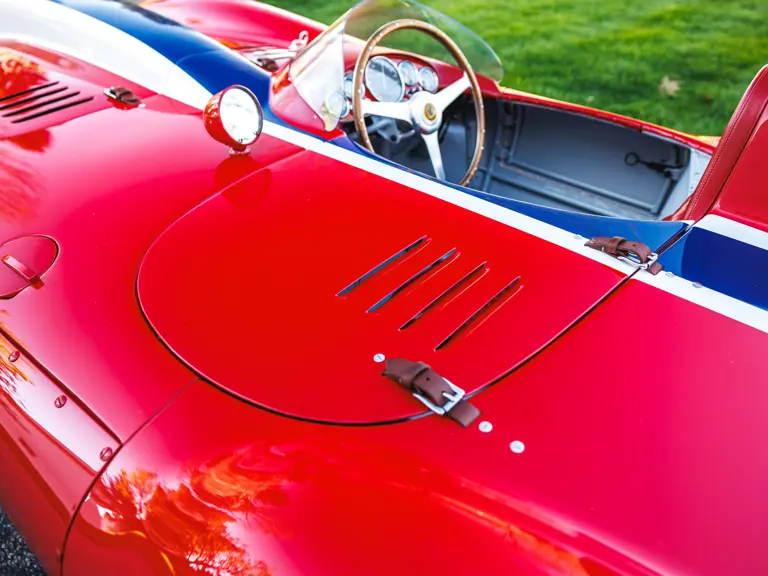

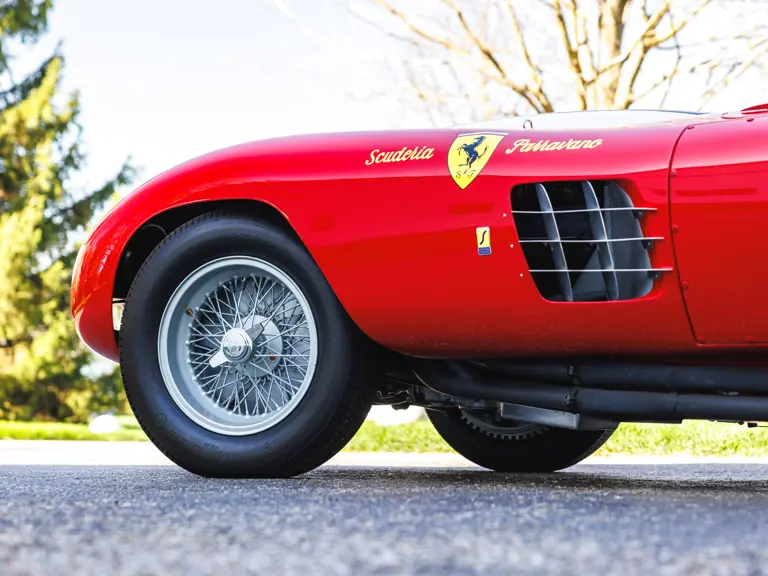
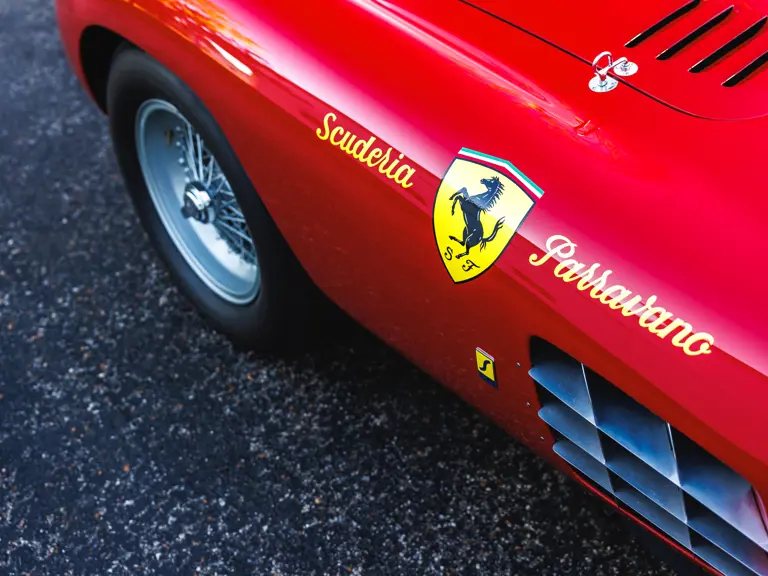
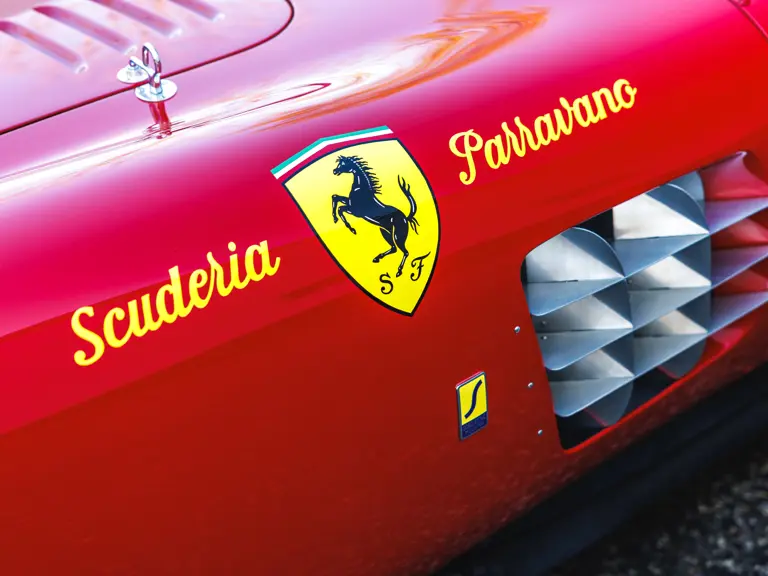



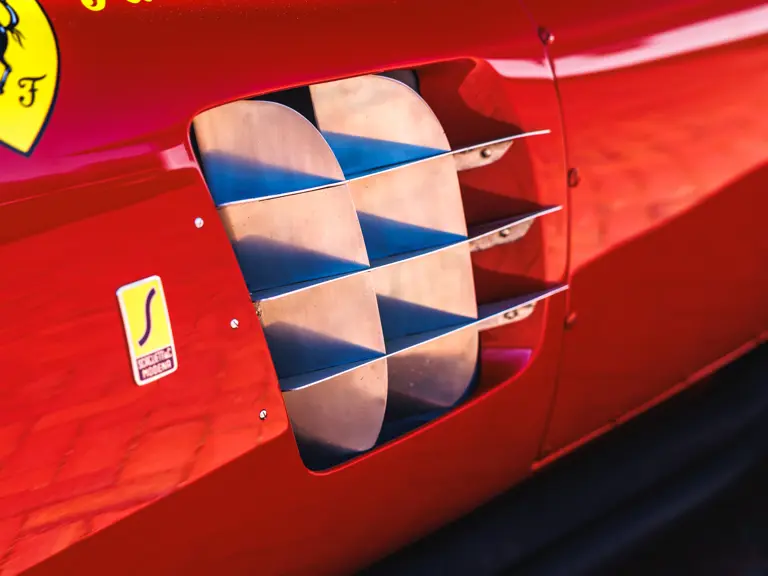

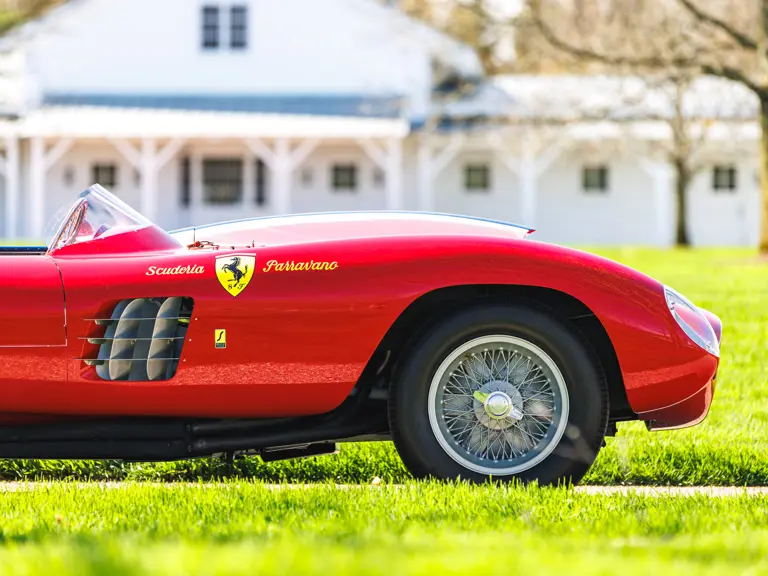
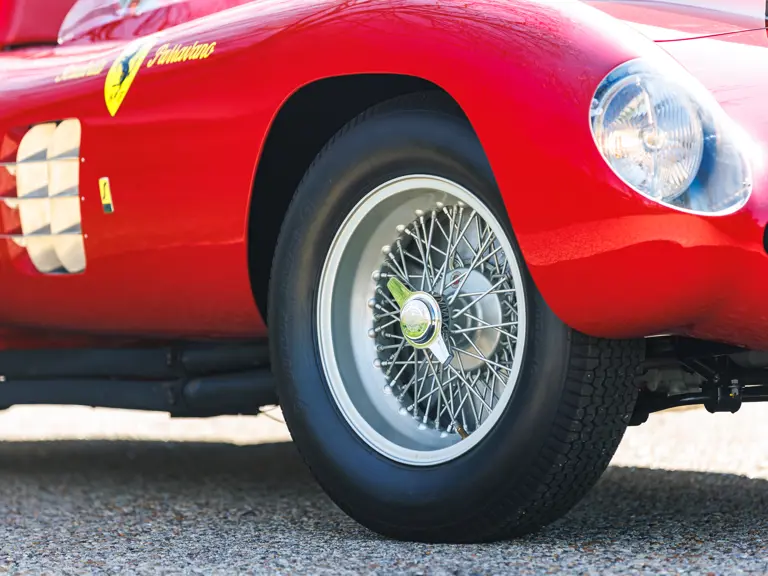

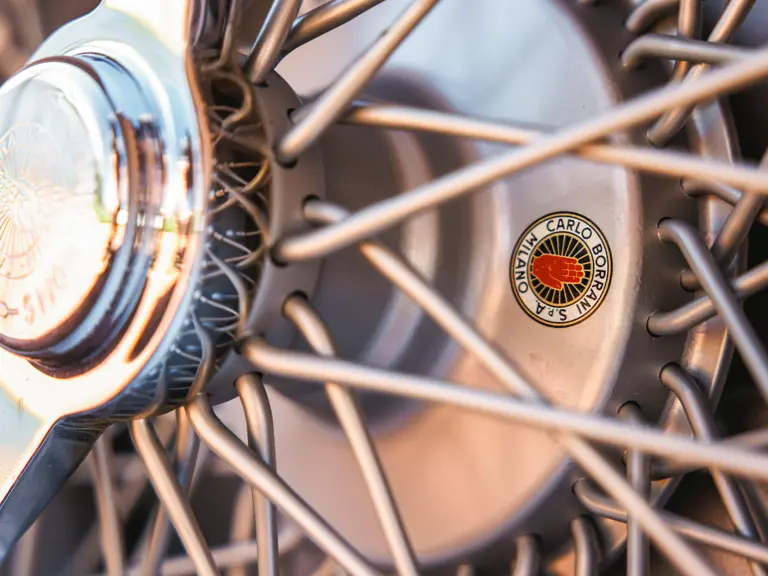
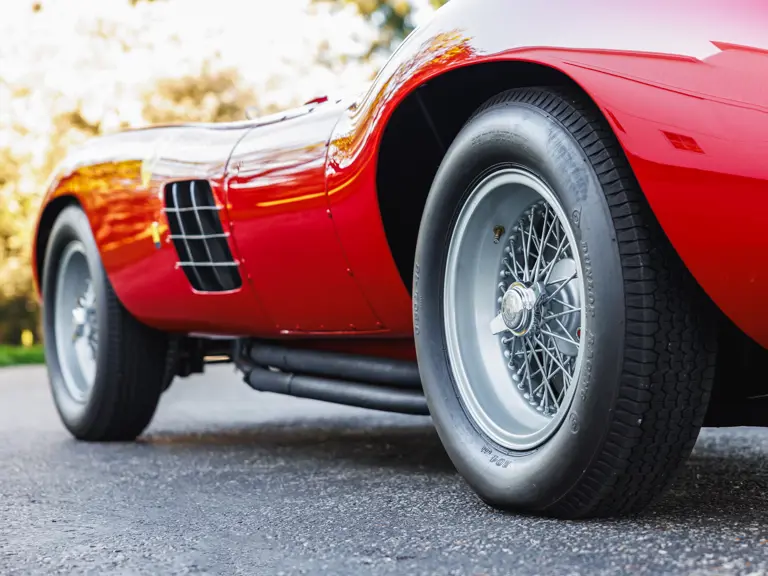
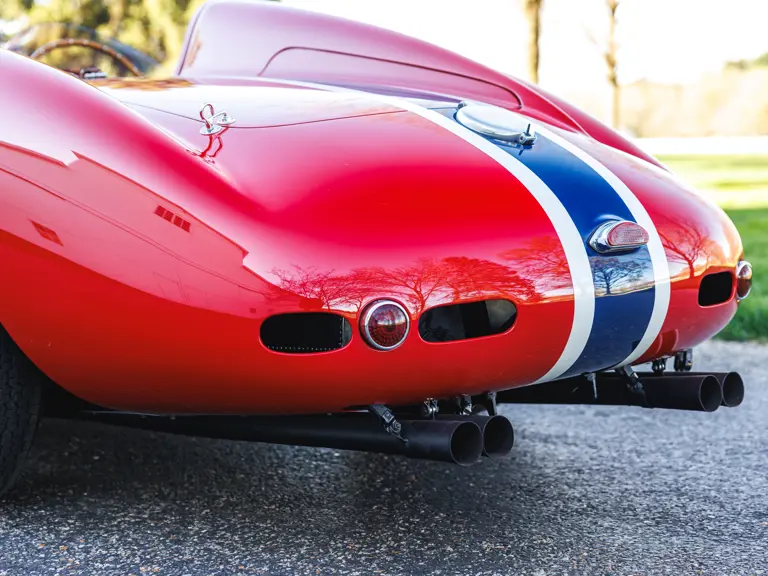

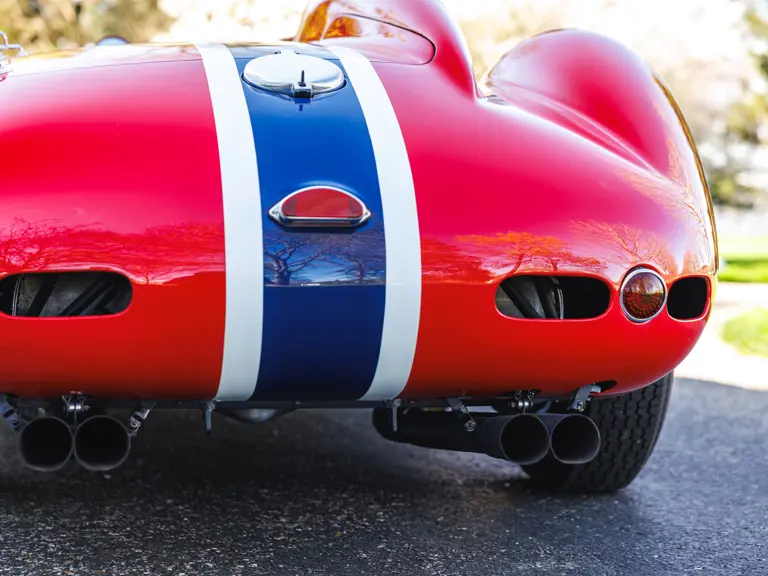
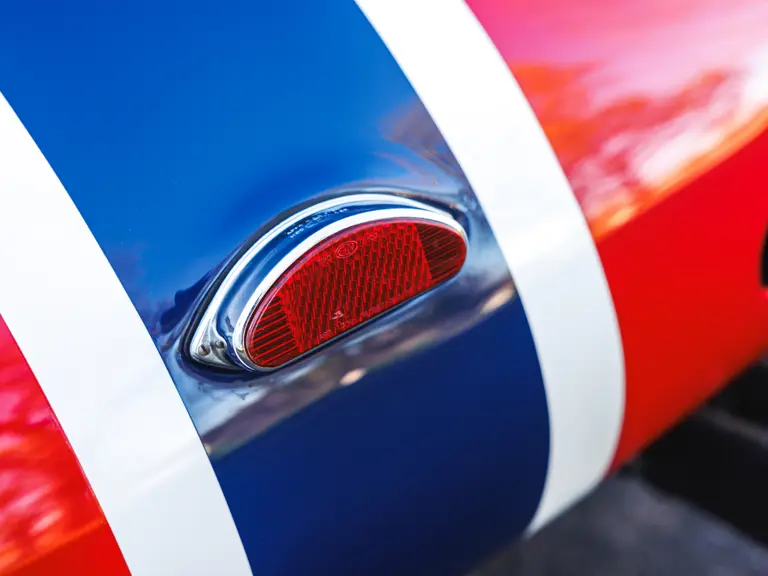



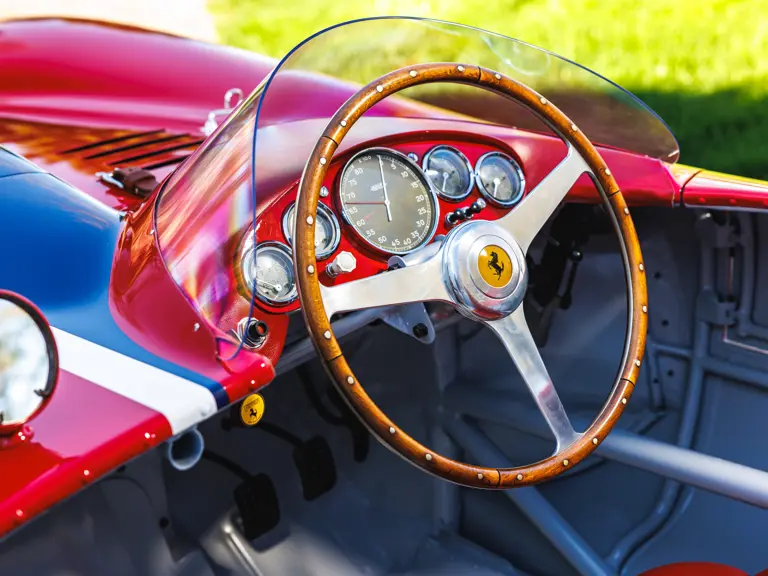
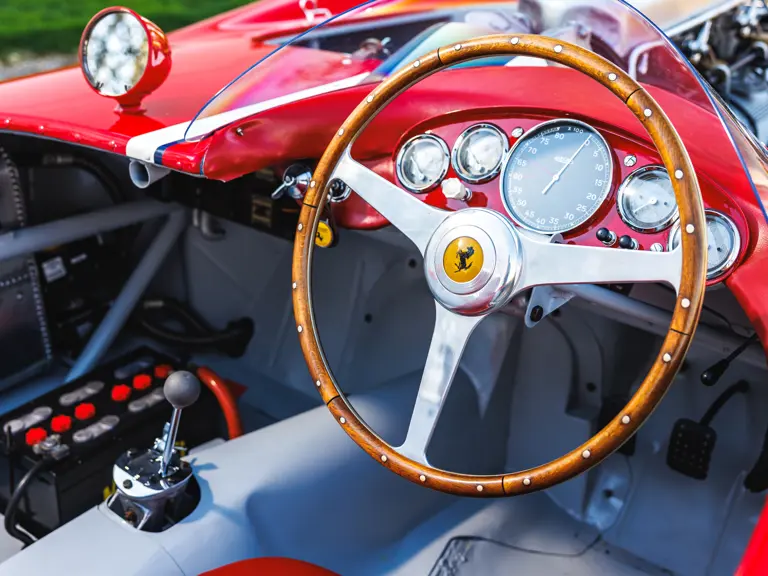
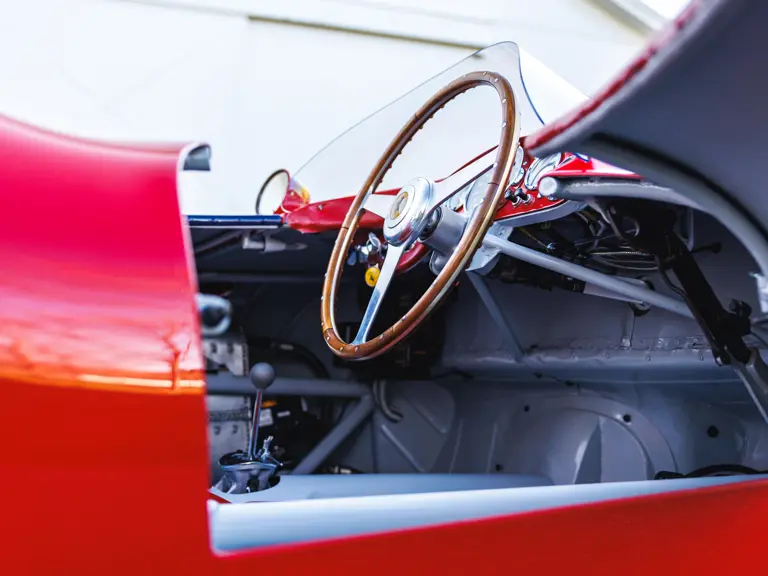

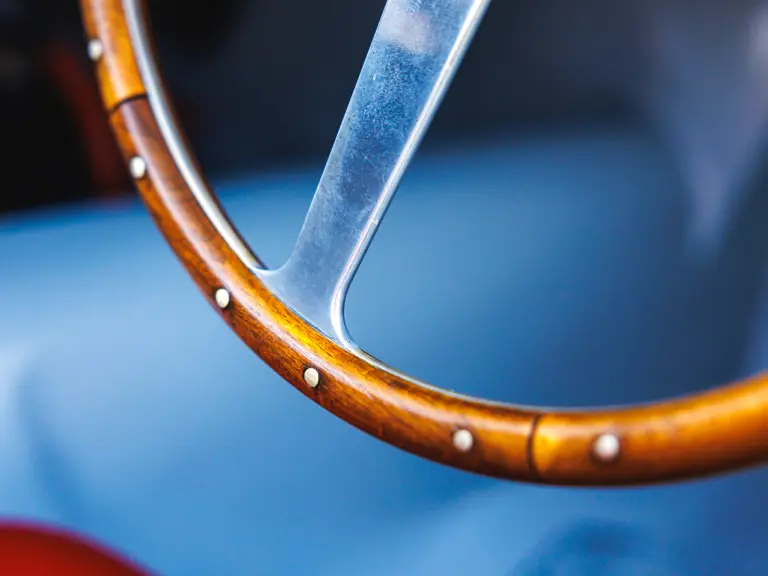

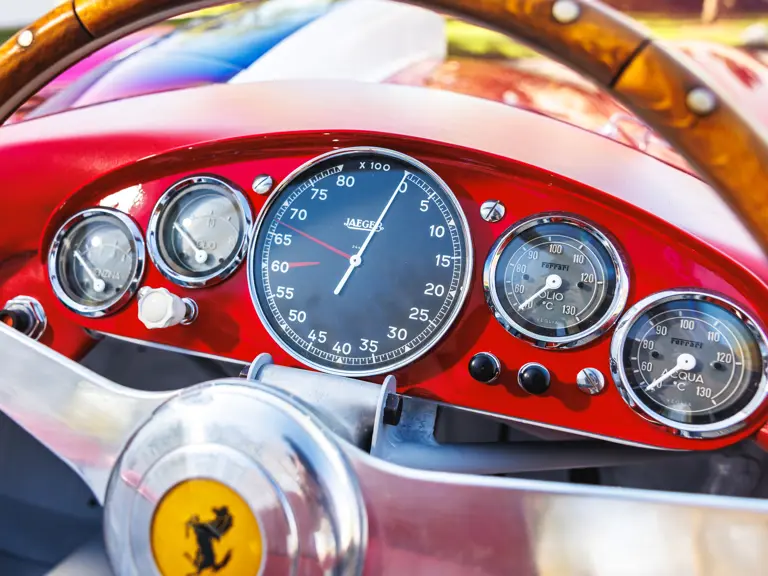
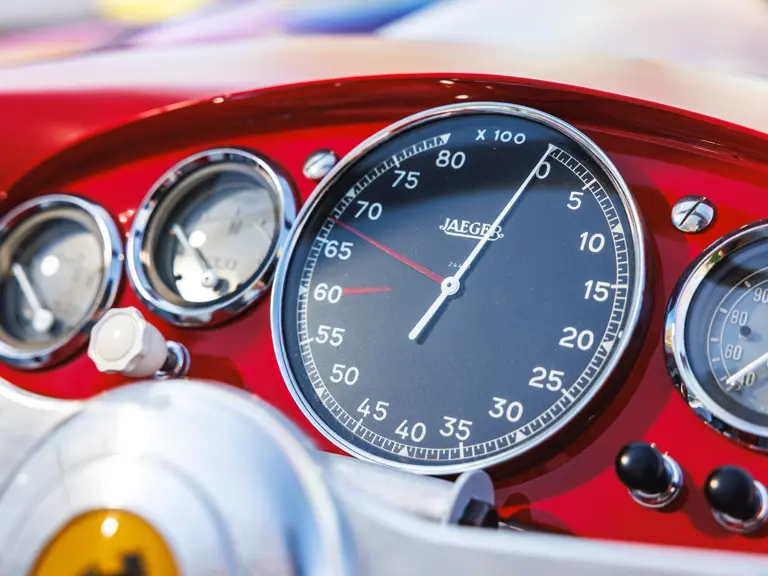


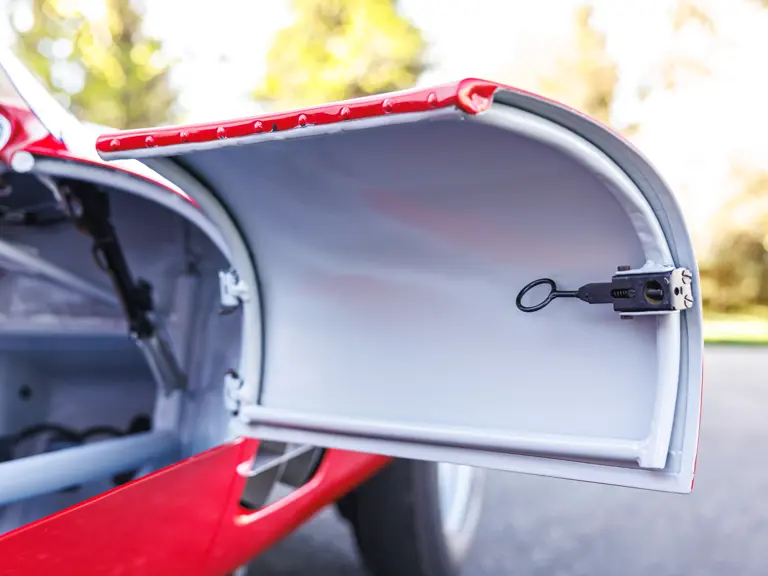


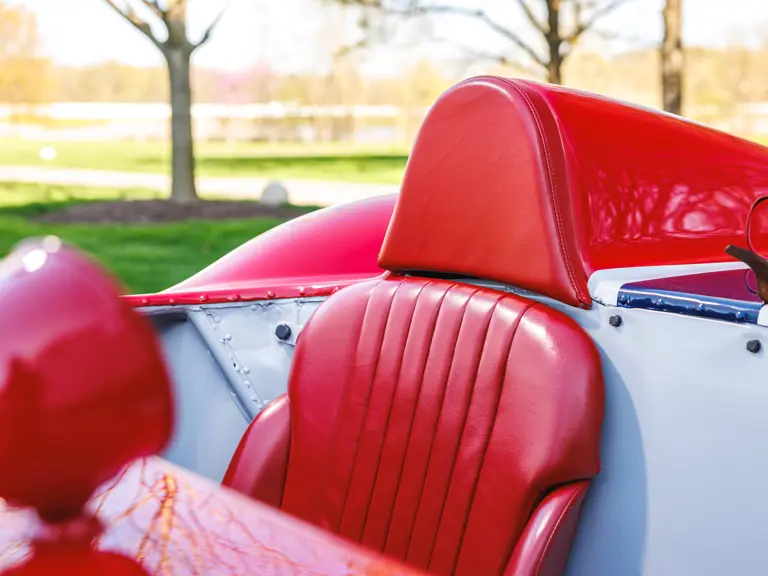
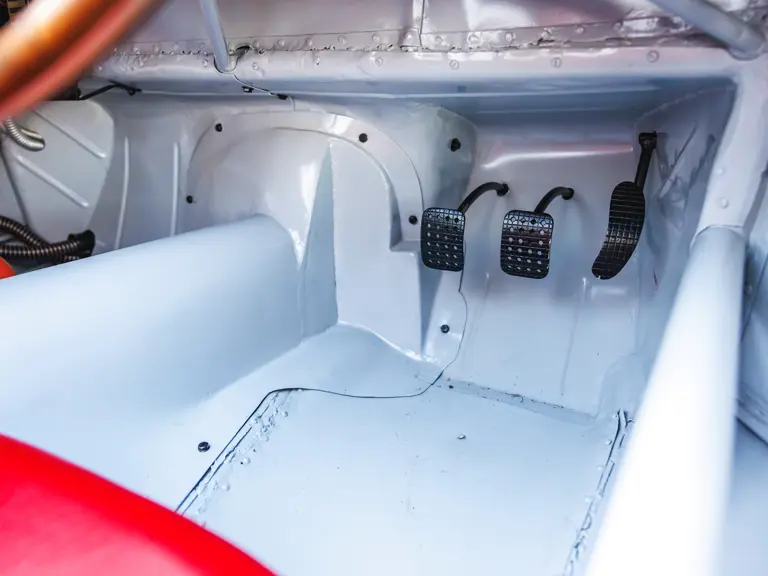
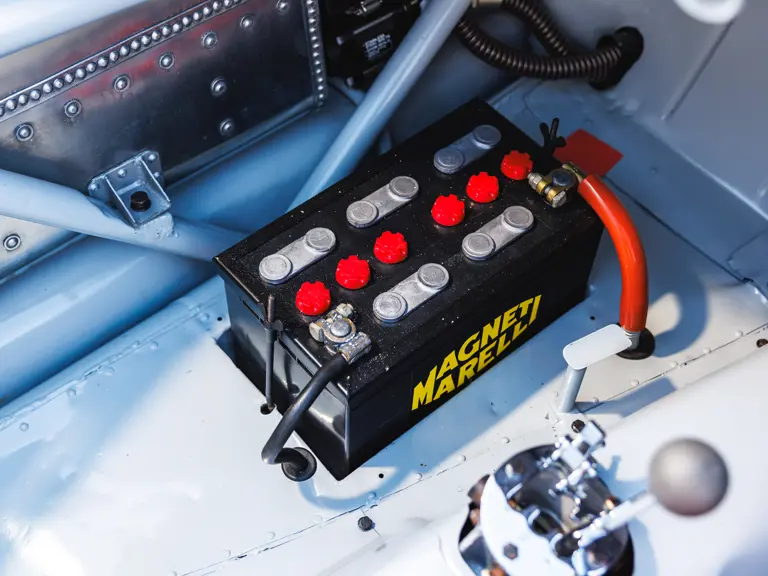
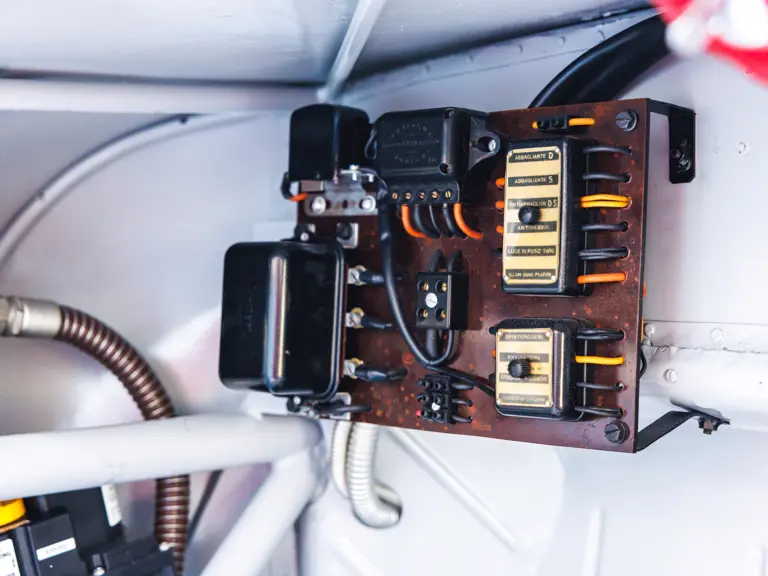

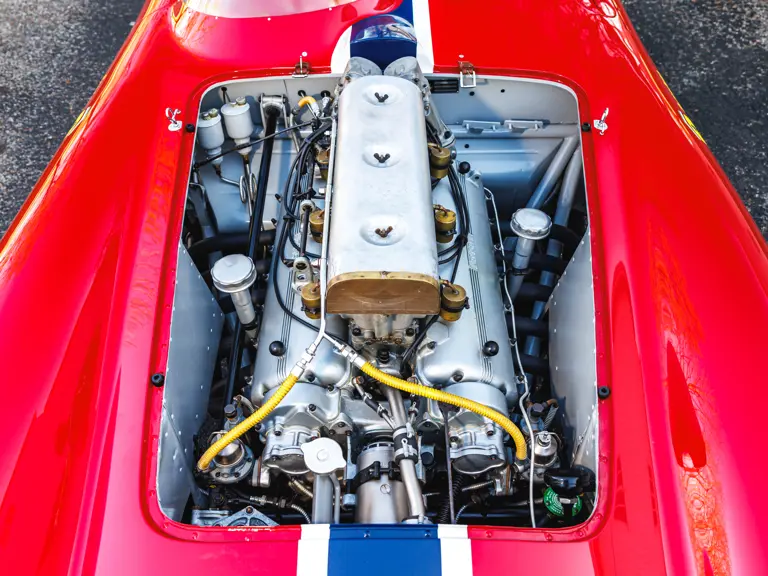
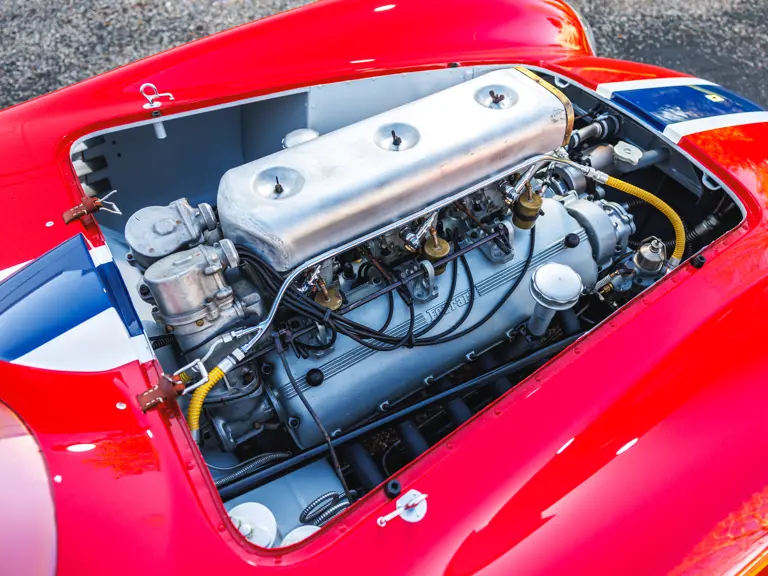


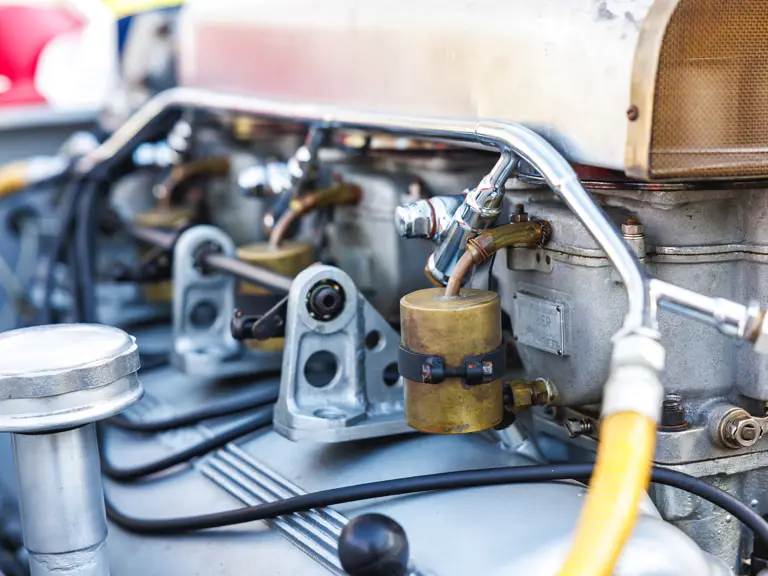
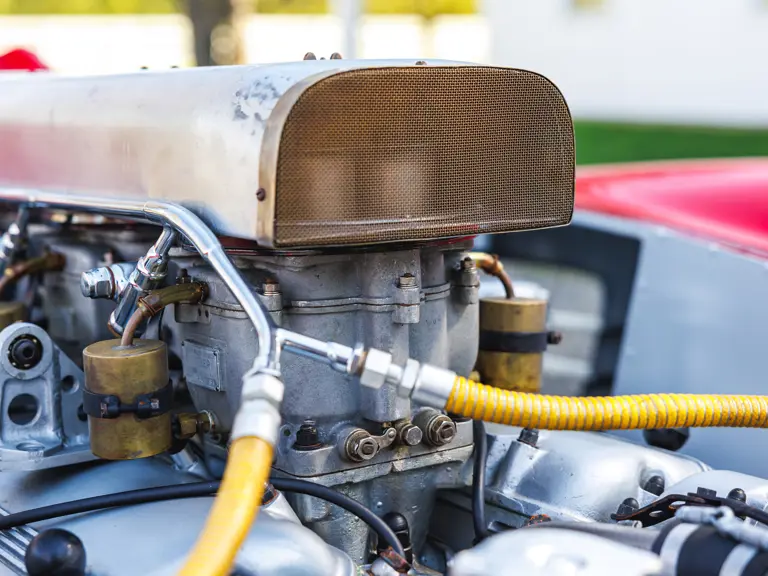
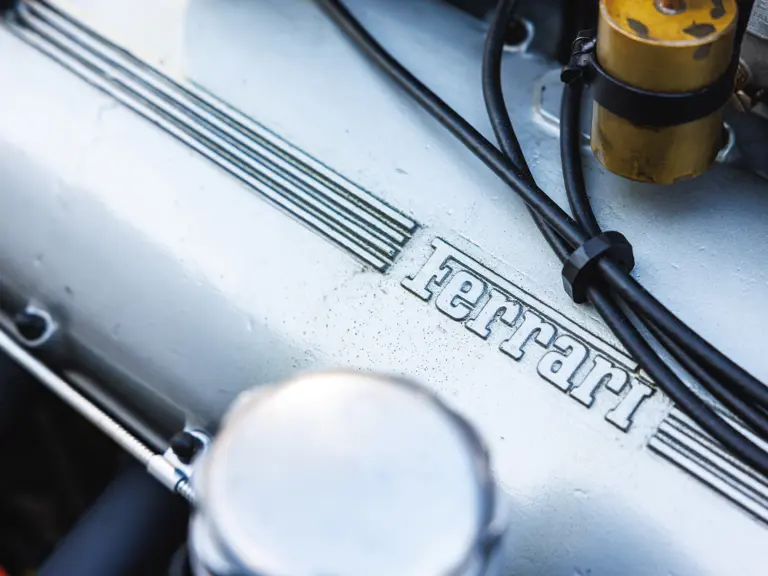
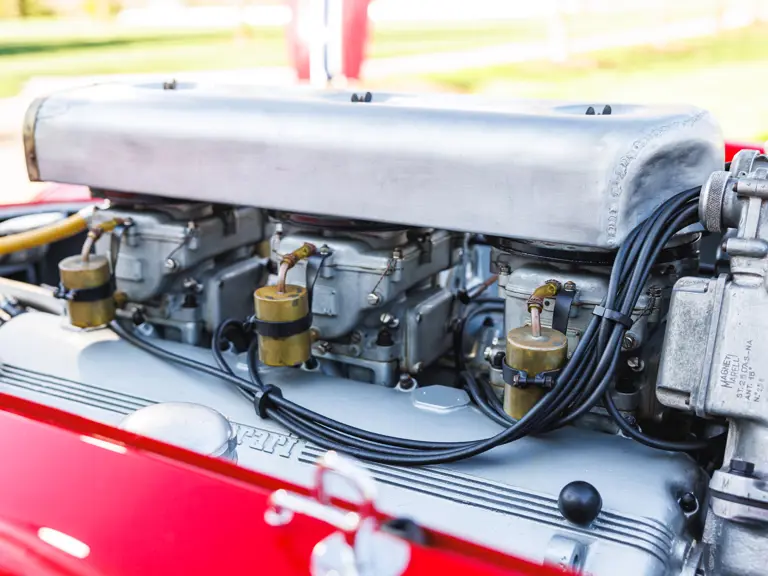

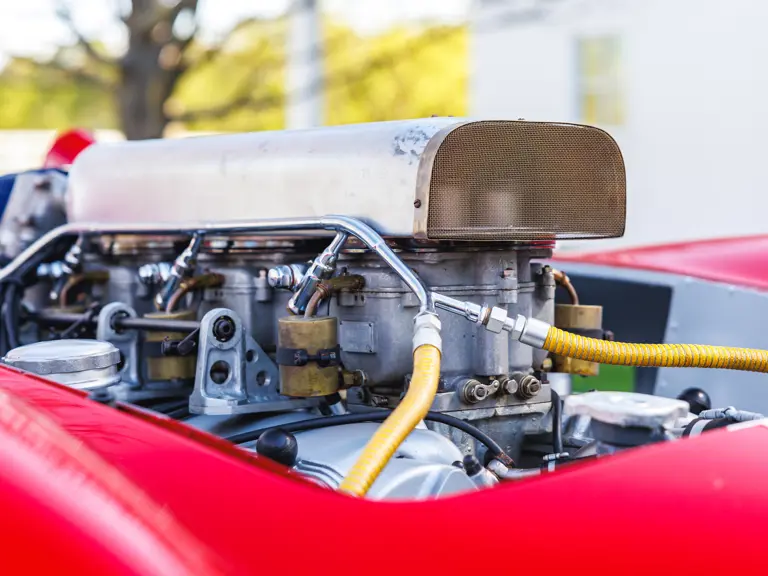


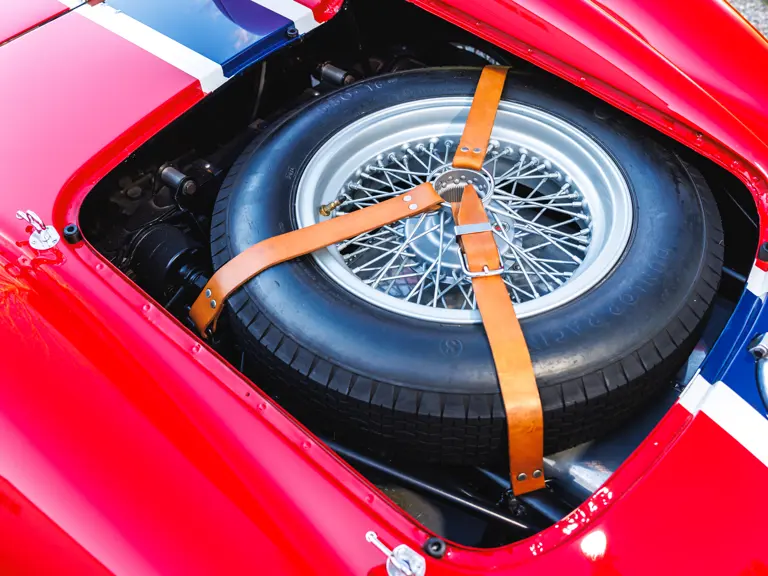
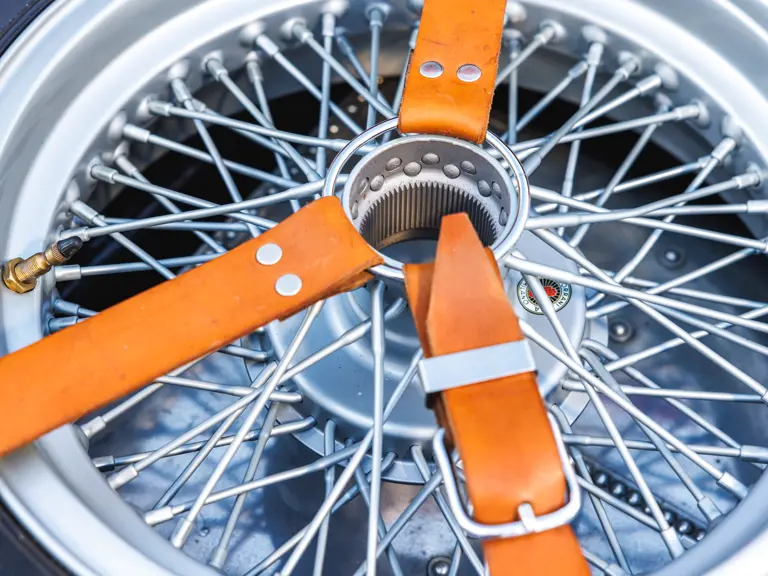
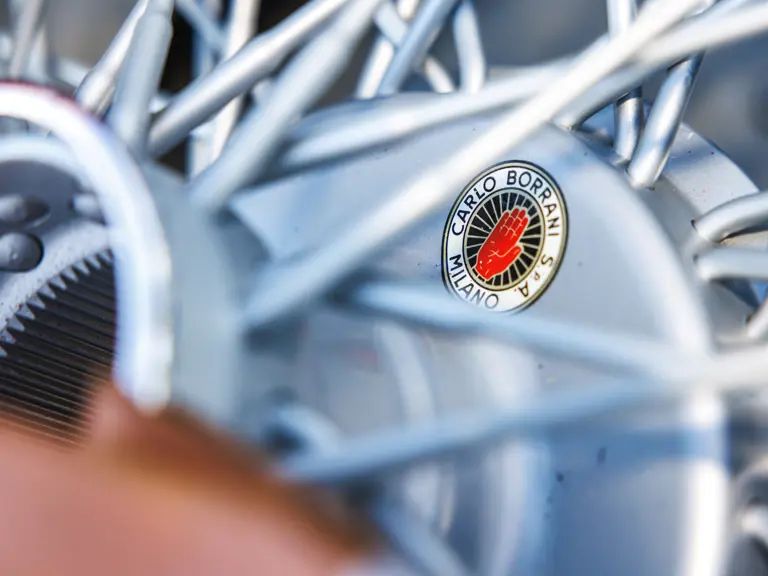


 | Monterey, California
| Monterey, California
